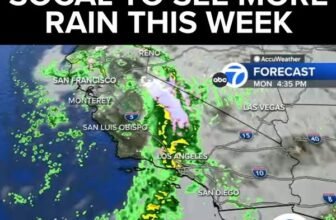What has hit Hollywood hard since the launch of the Sora app late last month should have at least started to become apparent back in April, when the Studio Ghibli trend gripped ChatGPT.
A tsunami of personalized, algorithmic derivatives swarming social media feeds offered unavoidable evidence of the threat generative AI posed to intellectual property as it supercharged and dispersed the damage across numerous IPs.

Yet Sora was the apparent breaking point, as studios and agencies saw how completely they were being cut out of decisions about the use and monetization potential of IPs or celebrity images and voices, leaving them to play whack-a-mole while rampant unauthorized digital replicas eroded their value.
In the near term, the test for OpenAI preserving trust and relationships in Hollywood is how well it enforces guardrails preventing AI video outputs of IP and talent name, image, likeness and voice in Sora. Guardrails have come up since Altman walked back requiring rights holders and public figures to opt out, despite “edge cases” where they can be bypassed.
Looking ahead, Altman himself has begun to make references to industry interest in a “new kind of interactive fan fiction,” with plans in the works for usage-based monetization with a revenue share on Sora outputs.
In this scenario, rights holders, agencies and celebrity talent would opt in and be given “more granular controls” to manage exactly how their IP or likeness is replicated by users in Sora videos. Users prompting Sora for opted-in IP or individuals would pay a fee, split among OpenAI and participants.
It’s in OpenAI’s interest to negotiate with the entertainment industry. Popular IP and talent drive massive amounts of attention and revenue to YouTube and major social platforms. The initial days of unchecked user behavior on Sora proved how significant cultural references were to engagement, as does user frustration since guardrails have restricted it.
“I think they must be driven [to offer opt-in] by [the question of] how do they offer a better user experience and monetize? Essentially, how do you get more consumers to pay?” said Victoria Furniss, founder and CEO at AiPHELION, an IP and AI consultancy. “It’s more likely that people will be willing to pay or accept ads on content that includes existing IP.”
But does that prospect realistically stand a chance of appealing to studios, talent and agency reps? More important, is it the best option as Hollywood grapples with its hot-and-cold stance toward generative AI?
One source to Luminate Intelligence went so far as to describe this as a pivotal moment that sets the precedent for how AI companies engage with Hollywood and how IP and NIL are valued and monetized within gen AI services.
If studios and agencies are prepared to opt in their properties and talent likenesses, following through wouldn’t be a simple yes or no and would require negotiating:
- Which characters or IP assets to open up to on-demand replication in Sora: Brand dilution or confusion, value destruction and misinformation through overexposure or outright abuse is a risk. “Effectively, you’re sort of mortgaging your IP [or likeness] based on the notion that the additional revenue from this AI accelerated user-generated content is going to exceed any potential brand damage or dilution from it, which is speculative,” said Simon Pulman, a transactional M&E partner at Pryor Cashman.
- How to allocate revenue and who should participate: This would require complex negotiations not just between OpenAI and studio(s) or agencies but between studios and agencies. A user prompt that commingles IP from different studio owners (e.g., Homer Simpson having dinner with Bugs Bunny) would require both properties to be opted in and, presumably, any studio rights holders to agree to having their IPs appear together. A second landmine is that character IP and talent NIL are often bound together. For example, Iron Man is not just Disney’s character; it’s Robert Downey Jr.’s face and voice. “There’s a new right that needs to be negotiated now. It’s not just an exact replica of the copyrighted character, a more complicated and lucrative NIL right,” said Dan Neely, CEO at Vermillio.
- How to ensure that rules of IP or talent exposure vs. restriction are enforced: Sources argued that guardrails would need to be enforced by a third party because the entertainment industry doesn’t want a repeat of Content ID on YouTube — effectively a platform tasked with self-regulation.
Some studios have likely envisioned building and managing a gen AI-powered service themselves akin to what the Sora app achieved: an offering where fans can create and insert themselves into universes of character IPs and worlds. “That’s ultimately the goal, I think — giving the consumer the ability to play around with the IP,” said Furniss.
Until then, though, working with the AI giants could be the most viable path forward, just on terms fairer to content producers than what’s in place today. “But you have to do that in a proper way,” said Luke Arrigoni, CEO at Loti. “People have to be compensated for their creative output.”








